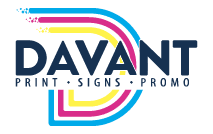Photo Credit: https://www.freepik.com/photos/heart
What Are The Pros and Cons of Die Cutting?
Textile and printing industries use die cutting equipment in order to create a uniform and efficient product. Used in a variety of techniques such as eye-catching product packaging, business cards cut into the shape of your logo with pop-through color, or brochures with unique openings or tabs, die cutting is a versatile and cost-effective way to make print marketing more compelling.
What is Die Cutting?
This is the process of cutting the material into a unique shape after printing. The flat material is cut into the desired shape by way of a steel cutting die, or sharp blade, that has been shaped accordingly. “Think of a cookie cutter that creates the same shape repeatedly from your dough, holding the same size and shape for every cut.”
Since die cutting creates the same shape, with the exact same dimensions, over and over without using scissors, stencils, or a craft knife, It saves time (and money) and makes your cut-out shapes look professional and consistent every time.
Die Cutting Methods
Whether you’re new to die cutting, need some clarification, or have a specific question in the realm of die cutting, we’re here to provide you with some answers! Die Cutting equipment can come in many forms depending on the intended uses.
Rotary die cutting and laser die cutting are the two main processes used by professional print companies. These industrial cutting machines can cost thousands of dollars but are able to produce eye-catching custom die cuts quickly. Whereas manual die cutting machines are more suited for personal ventures and crafts. Rotary die cutting involves using a customized, machined part to cut through substrate. Rotary dies can make a variety of cuts and is known for its durability.
The Good and Bad of Rotary Die Cutting
There are many materials that can be rotary die cut. The most common are:
- Paper, Film, Foam, Gaskets, Tapes, Magnets, Tyvek, Vinyl, and Pouch stock foil.
Pros:
- It provides flexibility
- Unique design cutting is possible
- Affordable and lower cost
- Curving and bowing won’t appear
- The complex shape can be achieved
- Fast operation
- Multiple cuts are possible
- Many layers cutting is possible
- Best for achieving creases in plastics and card
Cons:
- The cutting tool is a sharp blade which can be dangerous
- New die for each design
- Base wood has to be perfect for saving itself from any disturbance during cutting
Materials Used in Laser Cutting
There are many materials that can be laser cut. The most common are:
- PSA, polyester, cork, foam, neoprene, silicone, PU, PE, PET, polycarbonate, polyethylene, polypropylene
- Thin foil, metal
- Ablation of metals bonded to polyester or similar substrates
- Abrasives, adhesives, fabric, paper, plastic, rubber, textiles
Pros:
- More precious work is possible
- Tiny design can be drawn by this
- Material’s density is not a problem at all
- Production time is less
- Customization is easier
- Efficiency level is high
Cons:
- Mixed type materials are not possible to handle
- Work for different temperature
- Dust and smoke is produced
- Cost is high
- Consume high energy
- Can cause the burn or other types of accidents
Laser die cutting involves using a high-speed laser to cut through substrates. Lasers can be used to make a variety of cuts and do not require any contact with the material. This is how it works!
Why Do I Need Die Cutting In My Print Strategy?
Die cutting has numerous practical and creative uses for professional print strategies. Businesses can use this process to emboss company logos on office supplies or mass-produce parts for a variety of products. Cutting paper in unique ways can be an engaging new way to engage customers or clients through your print marketing.
Here at Davant we provide a wide variety of products and can surely meet any need. We can help design and produce custom paper cuts to help your business stand out! Send us a message, or give us a call at (317) 849-6565 and let us know how we can help.

